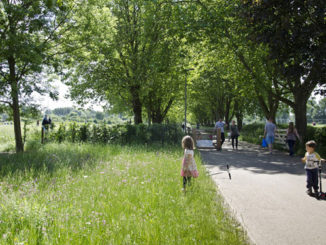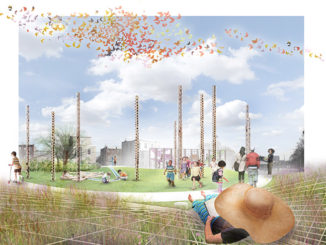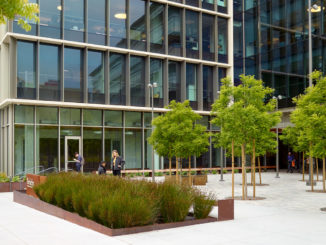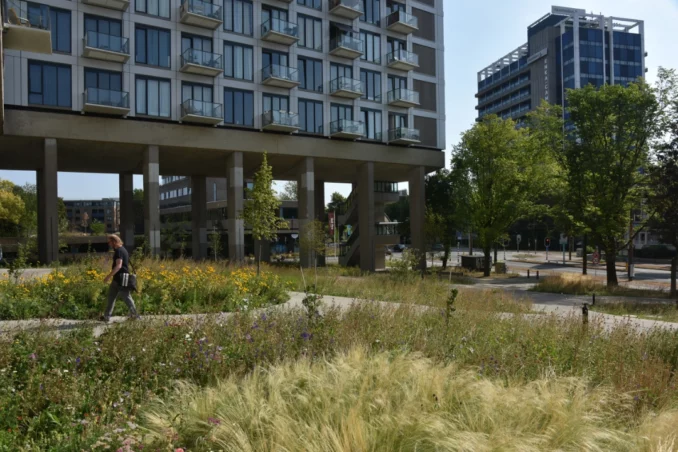
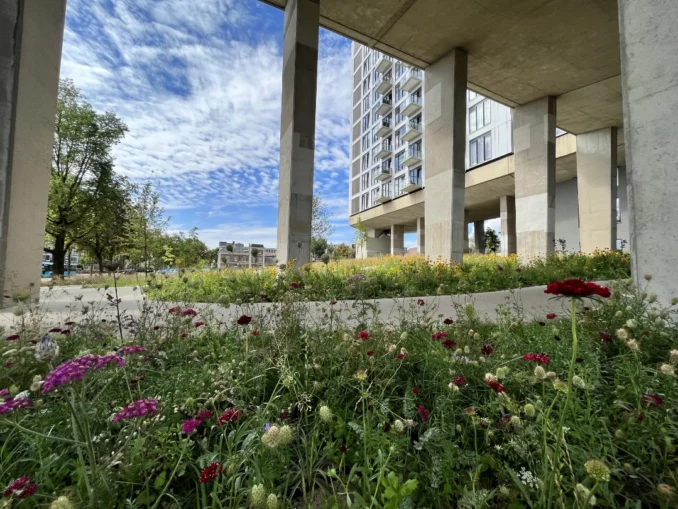
The High Park project is about repurposing abandoned office buildings and healing the urban fabric. This is a challenge. Especially when dealing with a building from the brutalist era that has a rather defensive appearance and is engraved in the local, collective memory as an irrepressible fortress. For a long time, the building was seen as the ugly polluter of the Arnhem skyline. High Park takes down both the physical and mental barriers that shaped this place. The plan opens up the entire site, visually and physically, by demolishing almost all the outbuildings and adding an undulated park. The aim was to create a proper park that connects the building entrances to the surrounding streetscape and opens the site to the surrounding neighbourhood.
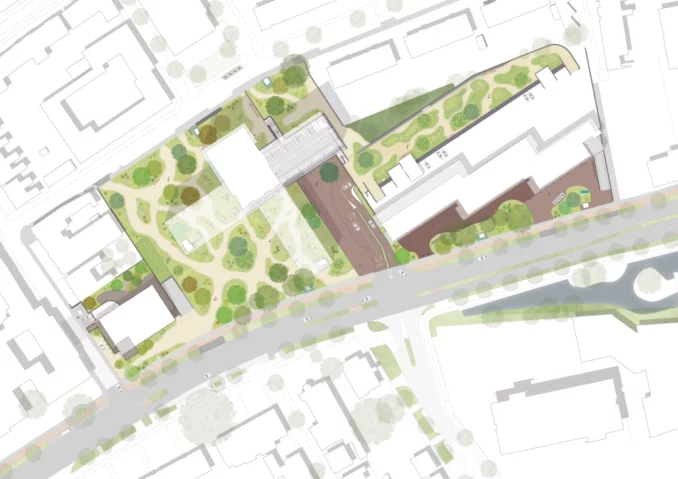
A closed bank colossus transformed into an open multifunctional building
The former ING bank building in Arnhem, the Netherlands, has undergone a complete transformation from a drab office and logistic building to a vibrant campus with a varied program and green spaces. The brutalist Kruisgebouw was designed in 1967 by Broekbakema Architects. Powerhouse Company transformed the building by stripping it down based on the original design.
The renovated building complex houses over 400 new apartments and lofts, as well as a supermarket, parking garage, gym and dentist offices in the main Kruisgebouw and eastern Oostgebouw.
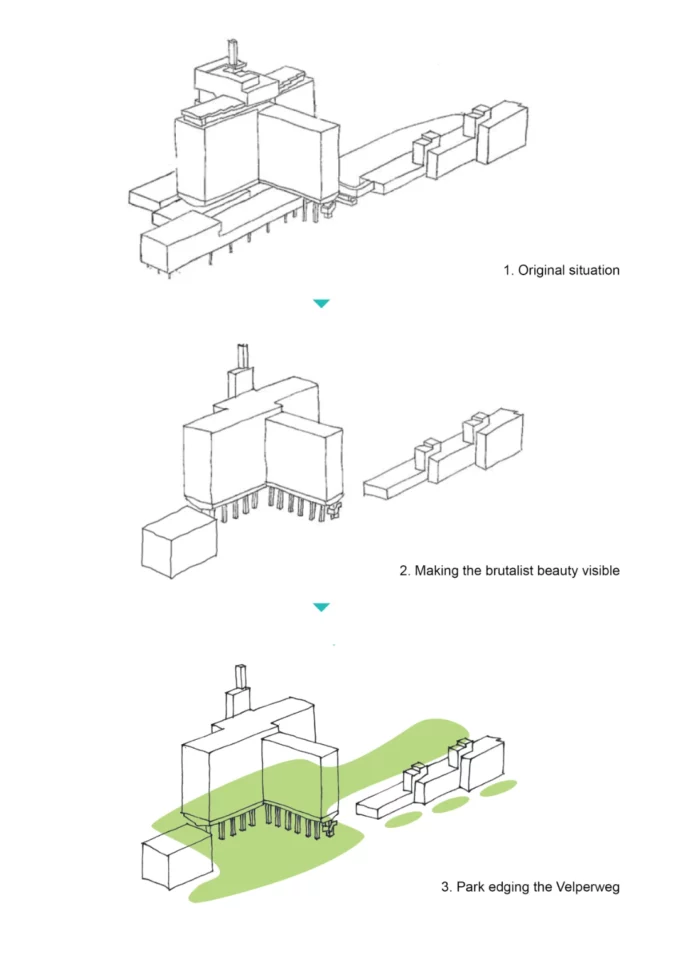
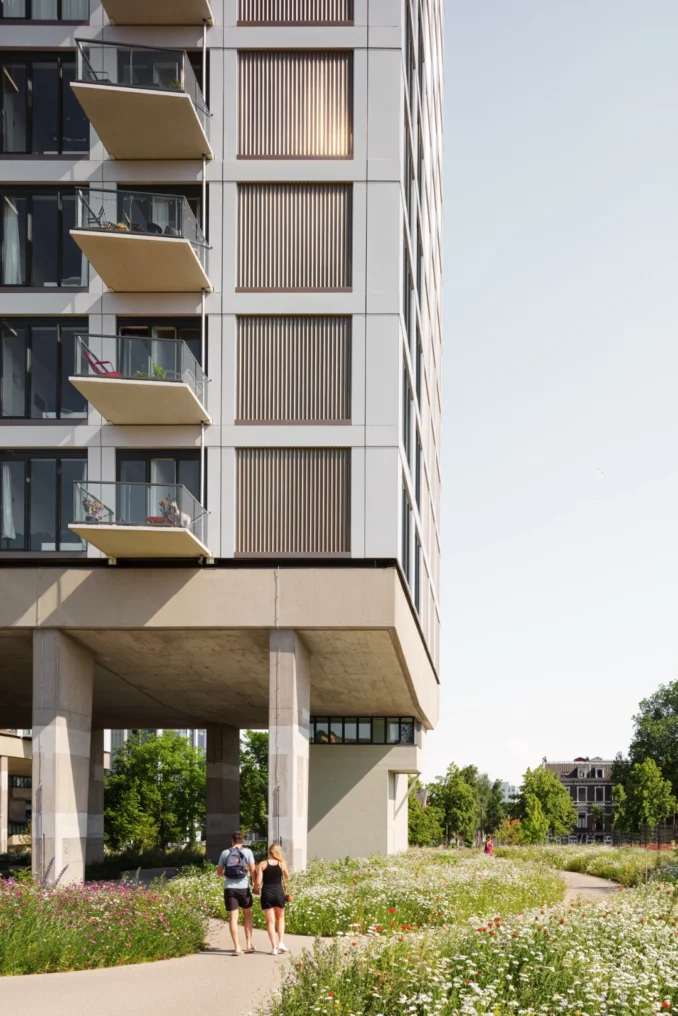
An enclosed distribution site transformed into a connecting landscape
Arnhem lies on the cusp of the Veluwe, a large Dutch nature reserve. Its natural sandy pathways snaking through heaths and grasslands inspire a meandering pattern of paths and planting, which is consistently carried out and connects the various components into one continuous park. The park is otherwise a nod to the original estates along the Velperweg, one of the main roads leading into the city centre. The organic design of the park contrasts with the brutalist architecture. The lush greenery consists of single- and multi-stem trees, shrubs, grasses, and perennials. Predominantly native plants and trees are used. In addition to those, non-native species suited explicitly for their heat tolerance are added to the plan. The planting is designed to accommodate various climate conditions such as shade, downwind, and limited growing space yet show a very diverse colour palette. Given the limited budget and the shallow planters, a technique of hydro-seeding was applied for the perennials.
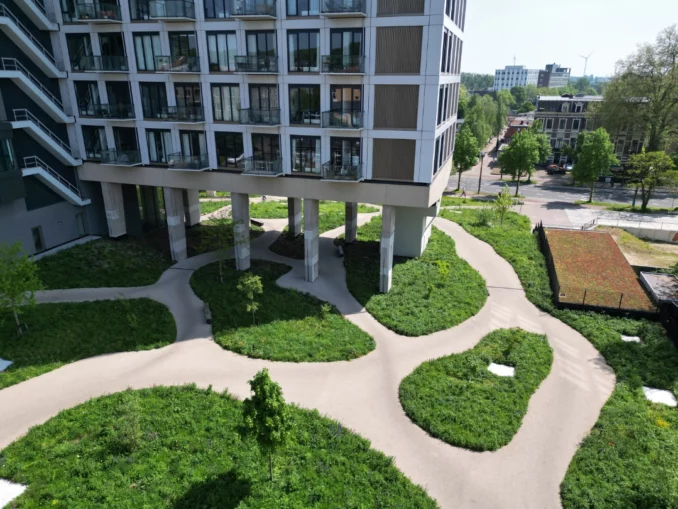
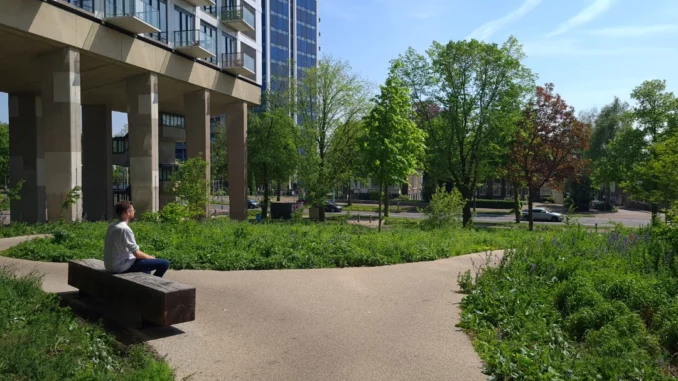
The park pathways are wide, durable, and easily accessible for maintenance and wheelchair users. The choice of material, asphalt with a top layer of soft-coloured crushed stone, mimics the sandy pathways of the Veluwe. Along these paths, strategically placed sturdy wooden benches offer a resting place and views overlooking the park. Half of the terrain is a roof garden that smoothly bridges a six-meter height difference in the local topography.
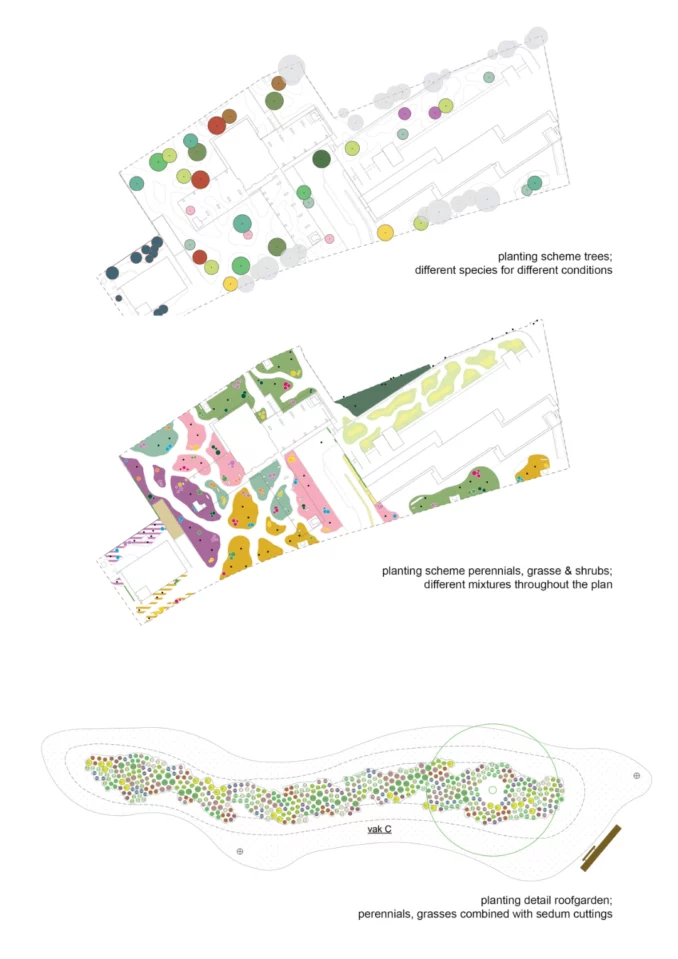
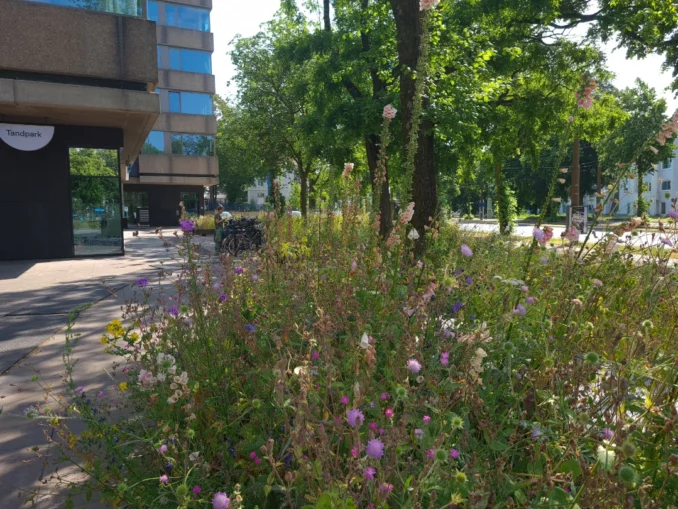
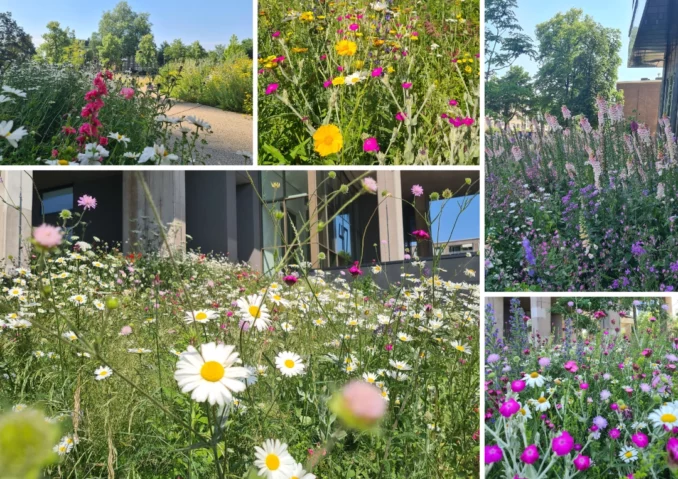
Climate-proof park
The design addresses challenges like rainwater storage, reducing the urban heat island effect, and the need for more biodiversity; it carefully incorporates them to create a pleasant place to stay. Rainwater storage is facilitated in both crates under the pavement and a water storage facility in the basement of the building, which can buffer the surface runoff during peak showers not only from the project area but also from the surrounding neighborhood. Urban wildlife gets a place, too, specifically a bat roost integrated into a former basement bunker.
Concrete nods to the past
In several places, a reference to the former use of the site was made. The main entrance square features original concrete sculptures, which are abstract renditions of office tools used by employees of the former bank, such as staples, punch machines, and stamps. They are placed on a pavement pattern that resembles a punch card, a subtle remark on the millions of punch cards that once were processed here in the original bank building. In addition to these, a handful of other sculptures that originally dotted the site are relocated within the project.
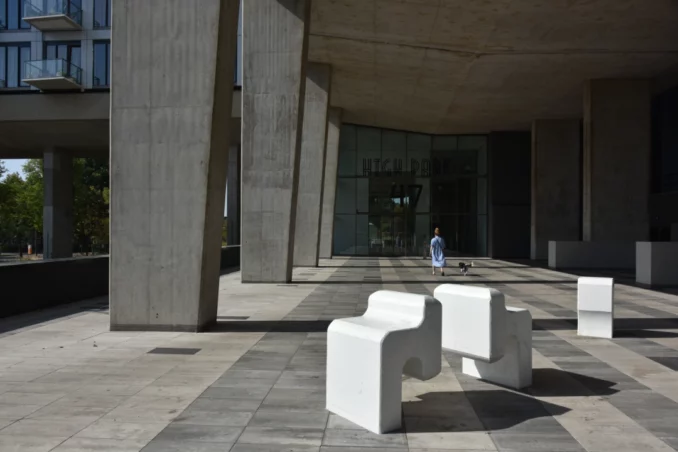
A connecting park for the building and the neighbourhood
The transformation adds 7500 square meters of semi-public green space to the city of Arnhem. The High Park creates a green connection in a dense part of town and offers a meeting place to both residents and the neighbourhood. It balances big bold shapes with fine details.
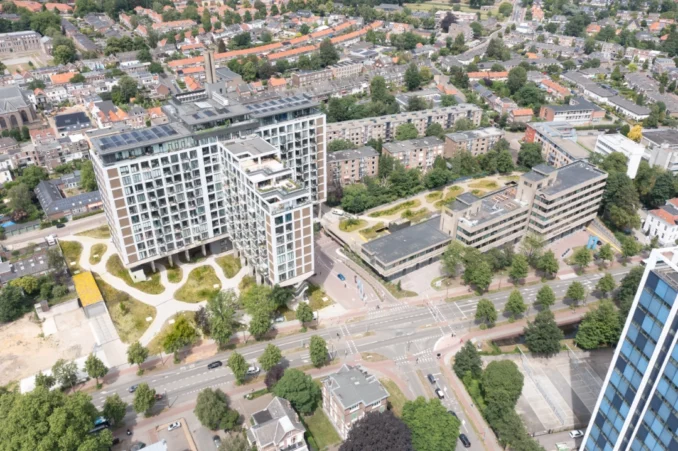
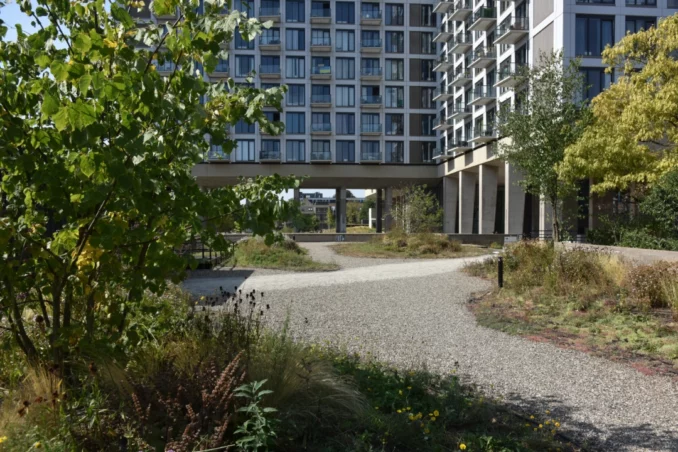
High Park
Location: Arnhem, the Netherlands.
Client: Borghese real estate
Designer: veenenbos en bosch landschapsarchitecten + Martijn Al
Collaborators:
Powerhouse Company, Loohorst landscaping, SmitsRinsma, gemeente Arnhem;
| Image Credit: Loohorst landscaping

